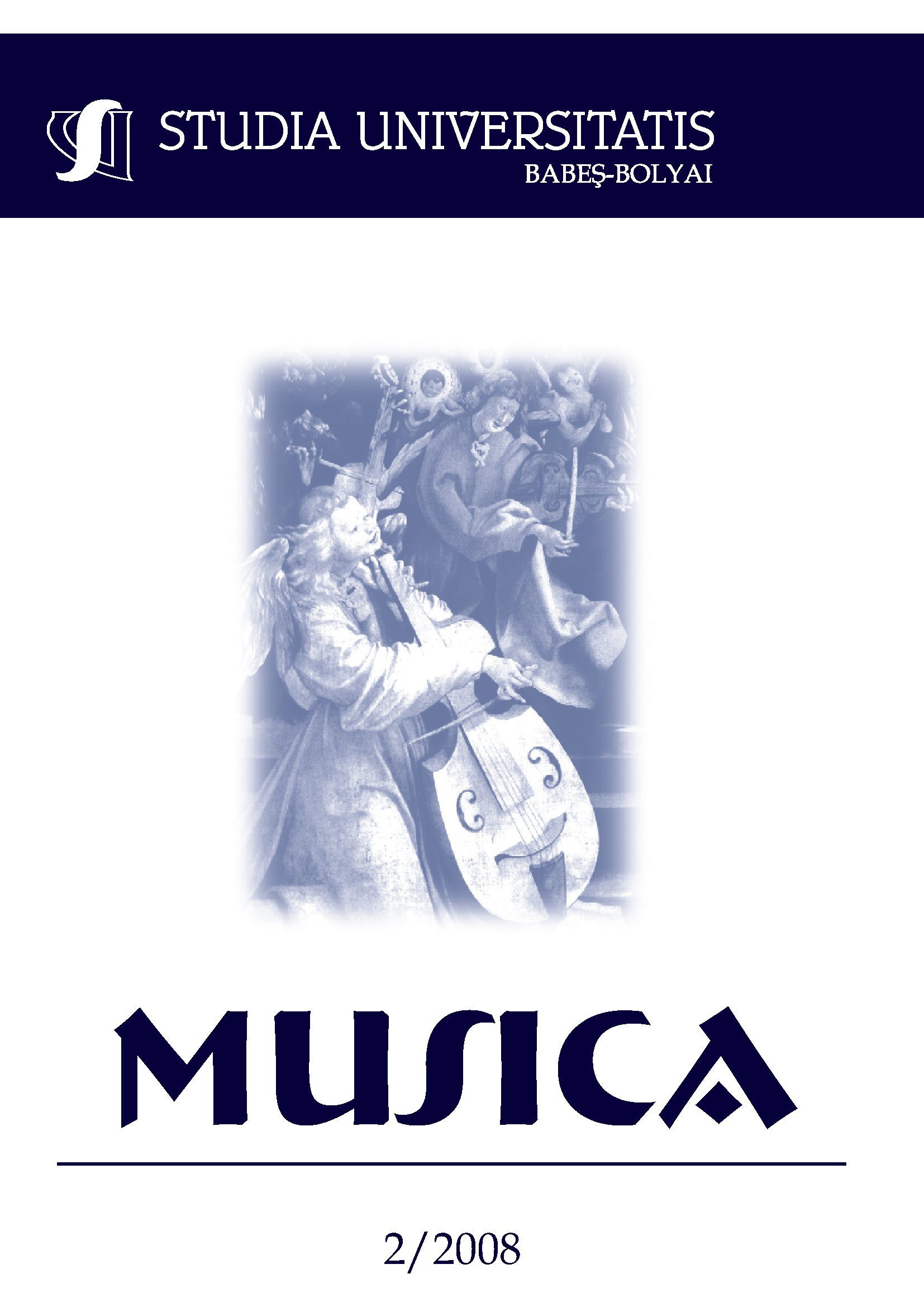THE VISION OF THE APOCALYPSE IN “DIE GOTTESTROMPETEN” BY EDUARD TERÉNYI
Keywords:
apocalypse, revelation, Terényi, eschatological, vision, hermeneutical, etaphors, aesthetic, sublimeAbstract
This article presents the theological and aesthetical ideas inspired from the book of Revelation, that form the background of the contemporary musical work Die Gottestrompeten and also, the ways they are revealed through musical means of expression.
The paper argues that, although the composer’s eschatological vision seems to be the one specific to the contemporary art, overwhelmed by the image of God’s wrath and the tragedy of world destruction, there are certain musical elements that certify the presence of the eternal love of God and the idea that it is this apocalyptic wrath from which Christ saves us of. Through a hermeneutical approach, we seek to discern the eschatological metaphors and artistic images used by the author and to point out the balance between the aesthetic categories of the tragic (man’s suffering/death as a result of his sins) and the sublime (expressing God’s sovereignty and His glorious plans).
References
Terényi, Eduard – in: The New Grove Dictionary of Music and Musicians, Edited by Stanley Sadie, London, 1992.
New American Standard Bible, Thomas Nelson, Publisher, Nashville-Camden-New York, 1977.
Coca, G., Ede Terényi. Retrospectiva a cinci decenii de creaţie (l, II)” (EdeTerényi. The Retrospective of Five Decades of Creation), in: Muzica Review, Bucharest, no. 3/1997 and 4/1997.
Cosma, V., Terényi, Eduard in Muzicieni români, compozitori şi muzicologi (Romanian Musicians, Composers and Musicologist), Encyclopaedia, Muzica Publishing House, Bucharest, 1970.
Hotoran, M., Conceptul variaţional în creaţia pentru orgă a lui Ede Terényi (The variational concept in Ede Terényi’s organ music), Risoprint Publishing House, Cluj-Napoca, 2008.
Hotoran, M., The Hymnological, Theological and Cultural Pattern Christus Victor (Christ Triumphant) and its Relevance in Eduard Terényi’s Musical Creation, in: Studii de Imnologie (Hymnologycal Studies) vol. III, The Publishing House of the West University, Timişoara, 2006.
Hotoran, M., Patimile si moartea Domnului in viziunea componisticii secolului XX. Genul pasiunii (The Dolorous Passion and Death of our Lord Jesus Christ in the Works of the 20th Century Composers. The Passio Musical Genre), Risoprint Publishing House, Cluj-Napoca, 2008.
Kant, I., The Critique of Judgement , first part, Critique of Aesthetic Judgement; Section I. Analytic of Aesthetic Judgement; Book II, Analytic of the Sublime; B The Dynamically Sublime in Nature; SS 28. Nature as Might - Translated by James Creed Meredith; http://www.library.adelaide.edu.au/etext/k/k16j/k16j.zip
Molnár, T., Muzica pentru orgă în secolul al XX-lea în România compoziţii noi, analize stilistice şi interpretative (The Romanian Organ Music in the 20th Century – recent works, analysis of style and interpretation) Grafycolor Publishing House, Cluj-Napoca, 2005.
Mostyn, R., What did Christ Accomplish at the Cross? With Reference to recent controversies namely “The Lost Message of Jesus” and the “New Perspective on Paul”, in: Perichoresis Review no. 5/2 (2007), Emanuel University, Oradea.
Sârbu, C., EdeTerényi – Portrait; in: Muzica Review, Bucharest, no. 9/1985.
Terényi, E., Dantesca, Grafycolor Publishing House, Cluj-Napoca, 2007.
Terényi, E., The Harmony of the Modern Music (1900-1950), Grafycolor Publishing House, Cluj-Napoca, 2006
Downloads
Published
How to Cite
Issue
Section
License
Copyright (c) 2008 Studia Universitatis Babeș-Bolyai Musica

This work is licensed under a Creative Commons Attribution-NonCommercial-NoDerivatives 4.0 International License.



